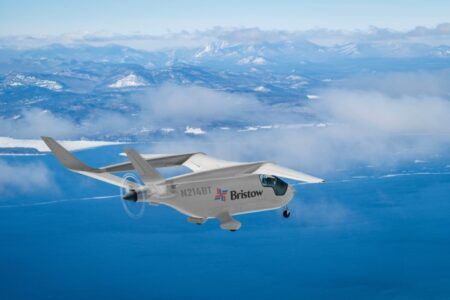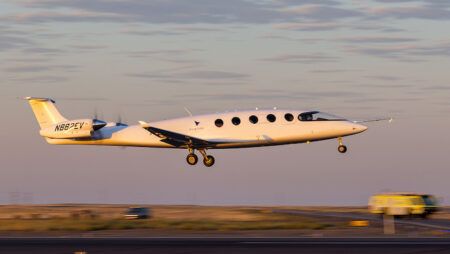Fuel cell developer Ballard Power Systems is to carry out test flights with Boeing subsidiary Insitu for its next-generation fuel cell propulsion system on the ScanEagle UAV.
The extended durability testing of the latest 1.3kW hydrogen-powered fuel cell follows two years of development and testing by Ballard and Insitu to integrate Ballard’s previous fuel cell system into the ScanEagle unmanned aerial vehicle (UAV). The successful conclusion of flight testing for this system was announced in mid-2017.
The latest fuel cell propulsion system features an increased power density, resulting from a new membrane electrode assembly (MEA) design and is also cheaper with an extended lifetime, thanks to the MEA and a one-step fuel cell stack sealing process. The fuel cell is also to provide more power without a significant increase in size or weight.
Phil Robinson, vice president of unmanned systems at Ballard subsidiary Protonex, said, “This new fuel cell has the potential to deliver a range of benefits compared to the use of an internal combustion engine, or ICE, to power the ScanEagle.
“These benefits are likely to include an increase in reliability and available electrical power along with a simultaneous reduction in audible noise, thereby enabling lower altitude missions.”
Fuel cell propulsion systems offer up to a threefold increase in mission time compared to battery-powered drones, according to Ballard.
Andrew Duggan, vice president and general manager of Insitu Commercial, said, “We look forward to further performance tests and customer demonstrations in the coming year.”
Insitu has also recently completed a flight demonstration of the ScanEagle working with its ground-based Unmanned Aerial Systems (UASs) airspace situational awareness system.
The system, which gives the platform the ability to detect nearby aircraft flying both within and beyond UAS operators’ line of sight, was developed in Australia and successfully demonstrated at the Mississippi State University (MSU) Raspet Flight Center in November 2017.
The ScanEagle is 1.55m (5.1ft) in length, with a wingspan of 3.11m (10.2ft) and a maximum take-off weight of 22kg (48.5 lb). The UAV can fly at a maximum speed of 41.2 m/s (80 kts), reach a ceiling of 5,944 meters (19,500ft).
January 10, 2018




